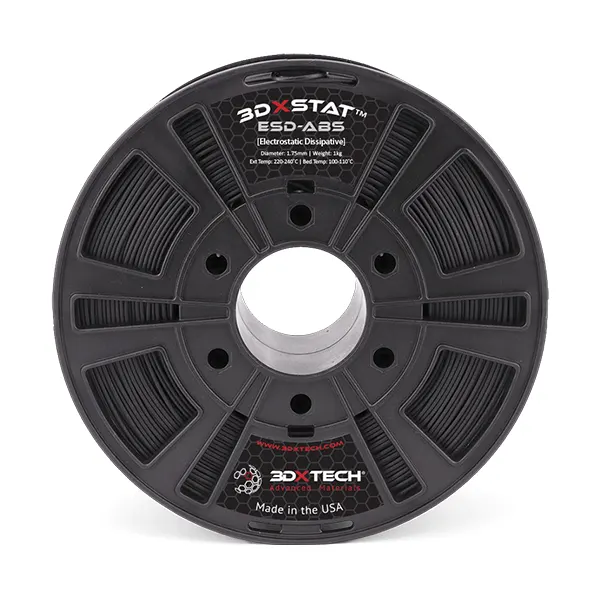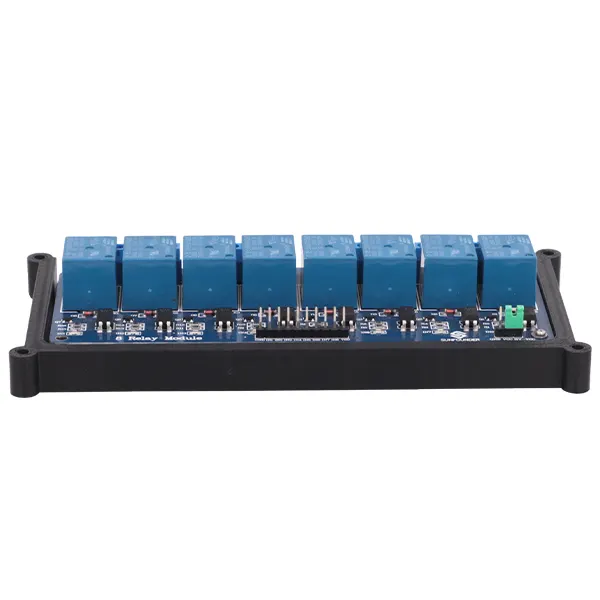
3DxTech 3DXStat ESD-ABS 1kg

Target surface resistance: 10^7 to 10^9 Ohm. Compare to Stratasys® ABS-ESD7 in performance and price and you’ll never go back! Made using cutting-edge multi-wall carbon nanotube technology, state of the art compounding technology, and precision extrusion processes.
3DxTech 3DXStat ESD-ABS 1kg

Target surface resistance: 10^7 to 10^9 Ohm. Compare to Stratasys® ABS-ESD7 in performance and price and you’ll never go back! Made using cutting-edge multi-wall carbon nanotube technology, state of the art compounding technology, and precision extrusion processes.
3DXSTAT™ ESD-SAFE ABS 3D Filament
Target surface resistance: 10^7 to 10^9 Ohm. Compare to Stratasys® ABS-ESD7 in performance and price and you'll never go back! Made using cutting-edge multi-wall carbon nanotube technology, state of the art compounding technology, and precision extrusion processes.
Print industrial-grade ESD-ABS parts with Gearbox™ HT2 High-Temp 3D Printer.
3DXSTAT™ ESD ABS is an advanced ESD-Safe compound designed for use in critical applications that require electrostatic discharge (ESD) protection and a high level of cleanliness. Manufactured with consistency in mind - 3DXTech starts with premium ABS and then compounded according to a proprietary formulation of multi-wall carbon nanotubes - giving you a filament with excellent printing characteristics and consistent ESD properties.
Benefits of 3DXSTAT™ include:
- Consistent and reliable surface resistance
- Improved retention of impact & elongation vs. similiar ESD-safe materials
- Low particulate contamination
- Minimal contribution to outgassing and ionic contamination
Typical applications include:
- Semi-con: HDD Components, Wafer Handling, Jigs, Casings, & Connectors
- Industrial: Conveying, Metering, and Sensing applications
Target conductivity for 3DXSTAT™ ESD ABS:
- 10^7 to 10^9 Ohm surface resistivity on 3DP sample using concentric ring method.
- Note: Internal studies have indicated that increased extruder temperatures can achieve higher levels of conductivity. Likewise, lower extruder temperatures have resulted in lower levels of conductivity. Each printer is set-up differently as well as varied part geometry. Therefore, expect some trial time to understand how this filament works in your specific printer / application.
Surface conductivity as a function of extruder temperature:
The surface resistance of the printed ESD-safe part will vary depending on the printer's extruder temperature. For example, if your testing indicates the part is too insulative, then increasing the extruder temperature will result in improved conductivity. Therefore, the surface resistance can be 'dialed-in' by adjusting the extruder temperature up or down depending on the reading you receive on your part.
Recommended Print Conditions:
- Extruder: 220 - 240°C (desktop printers). 3DXSTAT™ ESD ABS is a filled product and has a higher melt viscosity vs. unfilled ABS. Therefore, it is sometimes necessary to print at higher temperatures to allow the resin to flow properly.
- Bed Temp: 100-110°C
- Bed Prep: Kapton Polyimide Tape, ABS/Acetone Slurry
- Support Material: We recommend our PVA water soluble support - HERE or Breakaway support filament HERE
- Drying Instructions: Please see the following instructions for when you want to dry out this filament, HERE.

